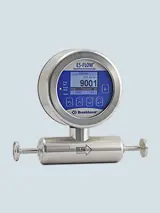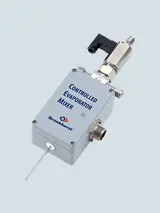Application examples

Vaporizer solution for electrolysis process
Discover eChemicles' innovation in CO₂ electrolysis with Bronkhorst's reliable vaporizer solutions ensuring precision and efficiency.
Read more

Accurate flow control for hydrogen heating
Discover how Nefit Bosch advances hydrogen heating solutions with FLEXI-FLOW's multi-parameter mass flow control.
Read more

Evaporation for fuel cells humidification
Learn more about evaporation system to optimize fuel cell testing with precise gas flow and controlled humidification.
Read more

Flow controllers for hydrogen storage
Learn how flow controllers are used in the research of alternative methods for hydrogen storage in metal hydride for fuel cells and vehicles.
Read more

Flow meters for hydrogen storage in lohc
Learn about flow meters and pumps used for precise dosing and control in hydrogen storage in LOHC.
Read more

Flow control in battery production
Discover the role of Bronkhorst mass flow controllers in the efficient production of silicon/carbon anodes for lithium-ion batteries.
Read more
Why Bronkhorst for the energy transition market
Why Bronkhorst for the energy transition market

Extensive product range
We offer a wide range of thermal bypass mass flow meters and controllers, including integrated controllers with capacities up to 10,000 ln/min, ensuring versatile solutions for various applications.
Flexible R&D support
Our solutions are tailored for research and development, with easy configuration via the Bronkhorst FlowSuite phone app or software, providing flexibility and convenience.
High-speed precision dosing
Our liquid flow controllers feature unique integrated high-speed precision dosing software, delivering exceptional accuracy and efficiency in liquid dispensing.
Products for energy transition market

EL-FLOW Prestige
High-end Mass Flow Meter/Controller for gases
For 0.014 mln - 100 ln/min
Accuracy *****
On-board gas database with 100 gases
Suitable for pressures up to 100 bar
View range

FLEXI-FLOW Compact
Multi-parameter Mass Flow & Pressure Meter/Controller for gases
For 0 - 500 ln/min and 0 - 16 bar(g)
Accuracy ****
On-board gas database with 22 gases
Multiple control functions
View range

mini CORI-FLOW
Coriolis mass flow meter for liquids & gases with controller output
For 0...300 kg/h
Accuracy *****
Best dosing solution by on-board controller
Suitable for any fluid
View range

IN-FLOW
IP65-style Mass Flow Meter/Controller for gases
For 0.014 mln/min - 11000 m3n/h
Accuracy ****
Multi-Gas/Multi-range functionality (optional)
Suitable for pressures up to 700 bar
View range
Find a solution
Find the right instrument for your gas, liquid, vapor, or pressure application. With our extensive range of products, we’ll help you match your needs. Start exploring now and discover your ideal solution.


Our containerized CO₂ electrolyser system demands absolute precision and stability to operate efficiently under low-temperature conditions. With support from Equtechnic and Bronkhorst, we achieved exactly that. Their flow control technology—especially the integrated vaporizer solutions—ensures consistent gas and vapor delivery, even in dynamic environments. This reliability is essential to scaling our innovation and accelerating the energy transition.

eChemicles Zrt. team

Need help?
Whether you’re choosing a solution or need on-site support, we’re here to help. From expert advice to reliable service, you can count on us to be close by and ready to assist.





















